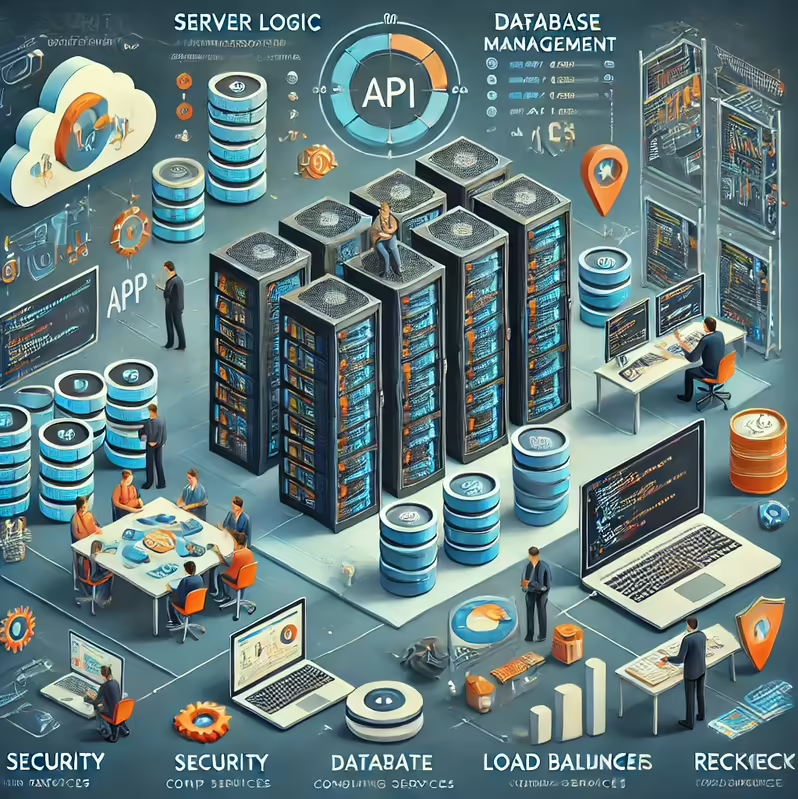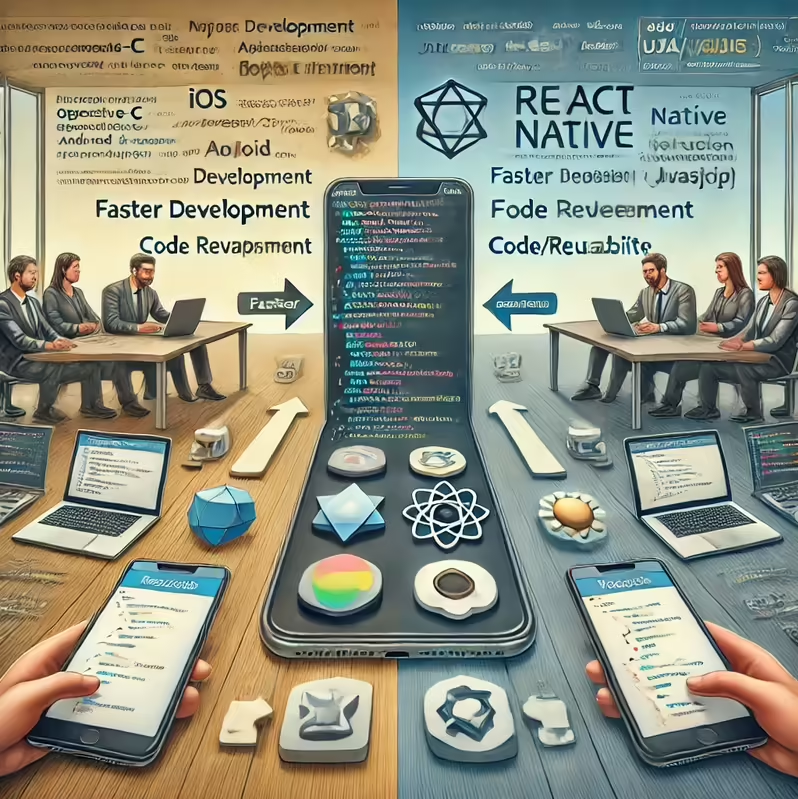Mastering Front-End App Work:
Creating Engaging User Interfaces and Experiences
In today’s digital-first world, users expect software applications to be intuitive, fast, and visually appealing. Whether it’s an e-commerce platform, a social media site, or a business app, the front end—what users see and interact with—is crucial to an app’s success. This means that front-end app work, which focuses on developing the user interface (UI) and user experience (UX), is one of the most important areas in software development.
Front-end development is the art and science of bringing a product’s design to life, ensuring that users can seamlessly interact with the application. Whether it’s through simple HTML pages or dynamic web applications driven by JavaScript frameworks, the front end serves as the bridge between users and the application’s functionality. In this blog, we will explore the various aspects of front-end app work and highlight how Curate Consulting Services can provide the specialized talent required to ensure success in your projects.
The Foundations of Front-End App Development
At its core, front-end development is about creating user-friendly interfaces that present application features in a way that is both visually pleasing and highly functional. Let’s dive into the key areas of front-end app work that shape how applications look, feel, and perform.
1. User Interface (UI) Design: Aesthetics Meet Functionality
The journey of front-end development starts with UI design. This is where visual designers craft the look and feel of the application, ensuring it aligns with the brand’s identity and appeals to its target audience. The color schemes, typography, layout, and graphical elements all play a role in creating an engaging interface that keeps users returning.
UI design isn’t just about making an application look good—it’s about balancing aesthetics with usability. A well-designed UI helps users navigate the application intuitively, reducing the learning curve and improving overall user satisfaction. For businesses, this translates to better customer retention and higher user engagement.
2. User Experience (UX) Design: Enhancing Usability
UX design focuses on how users interact with an application. It’s not enough for an app to look great—it needs to provide a seamless experience. UX designers pay attention to user flows, navigation, and the information architecture to ensure that users can easily complete tasks within the app.
For example, in an e-commerce platform, users need to find products, add them to a cart, and check out quickly and effortlessly. A smooth user experience can make all the difference in ensuring that visitors convert into paying customers. This is where the expertise of UX designers comes in, helping businesses improve their digital product’s usability and accessibility.
Curate Consulting Services has access to talented UI/UX designers who can help you create beautiful, intuitive interfaces that enhance user satisfaction and drive business success. We provide skilled professionals who specialize in optimizing user journeys, making them more efficient and user-centric.
3. The Role of HTML/CSS: The Building Blocks of Web Pages
Once the design is in place, front-end developers translate the vision into code. The foundation of any front-end application lies in HTML (Hypertext Markup Language) and CSS (Cascading Style Sheets).
HTML defines the structure of the content on the web page. It’s the backbone of all web content, organizing elements like text, images, and videos into a cohesive layout.
CSS is responsible for styling these HTML elements—controlling everything from fonts and colors to layout and responsiveness. CSS allows developers to create visually appealing designs that adapt to different screen sizes and devices.
Front-end developers not only write clean and semantic HTML/CSS but also ensure that their code is optimized for performance and accessibility. This includes implementing best practices for cross-browser compatibility and responsive design, ensuring that the app looks great on all devices and platforms.
4. JavaScript Development: Making Applications Interactive
While HTML and CSS provide structure and style, JavaScript adds interactivity to the web. JavaScript allows developers to create dynamic, real-time features that enhance the user experience.
From simple tasks like form validation to complex features like real-time data updates, JavaScript is the engine that powers modern web applications. Popular JavaScript libraries and frameworks such as React, Angular, and Vue.js streamline development, providing reusable components and a more efficient development process.
For B2C audiences, front-end applications powered by JavaScript enhance the overall experience by providing instant feedback, faster load times, and smoother navigation. For B2B buyers and enterprise leaders, JavaScript frameworks enable the creation of scalable and maintainable apps that drive business operations efficiently.
Curate Consulting Services specializes in providing top-tier JavaScript developers experienced in these frameworks, ensuring your project is equipped with the talent necessary to build high-performance, interactive applications.
5. Responsive Design: Adapting to Multiple Devices
In today’s multi-device world, front-end developers must ensure that applications are responsive. Responsive design ensures that a website or application adapts seamlessly across various screen sizes and resolutions, from large desktop monitors to mobile phones.
By implementing responsive design, front-end developers guarantee that users have a consistent experience, whether they’re using a smartphone, tablet, or desktop computer. This is particularly important for businesses with diverse audiences, as it ensures users can access their services or products from any device.
6. Cross-Browser Compatibility and Accessibility: Reaching Every User
Front-end developers also need to ensure that their applications work consistently across different browsers like Chrome, Firefox, Safari, and Edge. This is called cross-browser compatibility. Each browser renders HTML/CSS and JavaScript slightly differently, so developers need to test and adjust their code accordingly.
Moreover, accessibility is a growing concern in modern app development. Ensuring that applications are usable by people with disabilities is not just a good practice but often a legal requirement. Front-end developers consider accessibility standards such as the Web Content Accessibility Guidelines (WCAG) to make sure that features like screen readers, keyboard navigation, and alternative text are supported.
Curate Consulting Services can connect businesses with front-end developers who understand the importance of accessibility and have the skills to build applications that are inclusive, ensuring every user has a positive experience.
7. Integration with Back-End Systems: Making Front-End Dynamic
The front-end doesn’t work in isolation. Front-end developers collaborate with back-end teams to ensure that the user interface is connected to the server-side logic. This includes making API requests to retrieve data, handling responses, and dynamically updating the user interface based on back-end data.
For example, in a finance application, the front-end might display real-time stock prices or account balances based on data from the back-end system. Successful integration ensures that users see the most up-to-date information and can interact with it seamlessly.
At Curate, we provide specialized talent that can bridge the gap between front-end and back-end development, ensuring smooth integration and the delivery of reliable, dynamic applications.
8. Performance Optimization: Speeding Up the User Experience
In front-end development, performance optimization is key to creating fast-loading, responsive applications. Users expect websites to load quickly, and if an app lags or is unresponsive, it can lead to user frustration and loss of business.
Front-end developers optimize performance by minimizing file sizes, reducing HTTP requests, and using techniques like lazy loading for images or caching to improve page load times. Optimizing JavaScript execution, CSS loading, and image sizes can dramatically reduce wait times and enhance user satisfaction.
9. Continuous Testing and Iteration: Improving Over Time
Front-end development doesn’t end when an app is deployed. It’s an ongoing process of gathering user feedback, analyzing behavior, and making iterative improvements. Front-end developers regularly perform testing and debugging to identify issues and enhance the user experience.
Using version control systems like Git, front-end developers collaborate with teams to track changes, test new features, and deploy updates seamlessly. Automated testing and CI/CD pipelines help ensure that code quality is maintained while pushing out new updates quickly and efficiently.
Conclusion: Curate Consulting Services for Specialized Front-End Talent
Front-end development is a complex, multi-faceted discipline that requires both technical expertise and creativity. From designing beautiful, intuitive interfaces to optimizing performance and ensuring accessibility, front-end app work plays a crucial role in delivering the best possible user experience.
Curate Consulting Services offers access to specialized front-end developers, UI/UX designers, and JavaScript experts who can help you build applications that engage users and drive business results. Whether you’re building a new app from scratch or optimizing an existing one, Curate has the talent you need to succeed.
By partnering with Curate, your business can stay ahead of the competition with cutting-edge front-end development that meets the evolving needs of today’s users. Let us help you create the next great digital experience.







